Trekking into the crater
VISITED AUGUST 2017
Maui was built by two volcanoes now separated by a central lowland, The smaller western and older one at right in this oblique GOOGLE EARTH image from the north is 5788ft/1765m MAUNA KAHALAWAI - the bigger eastern one is 10062ft/3658m HAKEAKALA. The latter is not a high volcano by world standards but interestingly it's the second highest mountain in the world when measured from its base on the sea floor from where it began growing several million years ago. You can see the volcano makes up most of the eastern 2/3 of the island - apart from the central lowlands it drops straight into the sea making for either no or very little limited coastal plain.
It is currently dormant - last volcanic activity was in 1790.
Note the lowland passage between the two volcanoes - good cane growing country and a real funnel for the prevailing north east trade winds which blow 90% of the time - not great for riding a rental bicycle against: don't ask how I know this.
KAHULUI above is the main urban area on the island and PAI'A is the funky surfer/hippy town on MAUI'S north coast and below the slopes of HALEAKALA.
HALEAKALA is a shield volcano - the result of low viscosity outflows spreading considerable distances - it's about 40km wide north-south in this shot (slightly more east-west). So it doesn't appear 10000 ft high in this pic taken from the upper suburbs of KAHULUI about 30km from the peak. Actually this is a rare view - most of my August 3 weeks saw the upper reaches obscured by cloud.
The non-conic nature of shield volcanoes suggests gentle slopes but in fact there are some precipitous parts particularly in the north-east/east/south east hidden from the camera.
BANANA BUNGALOW'S CRATER TREK/SUNSET TRIP
This rather good hostel in WAILUKU (adjoining western KAHULUI) puts on a FREE HALEAKALA TRIP for guests incorporating both a 6+ hour crater trek and sunset observation from the summit.
It's a 42mile/68km trip from the hostel to the summit. Here we have stopped half way up the mountain at a viewpoint beside the HALEAKALA HWY overlooking south-central MAUI. Some good outlooks along here if clouds don't impede...
....which they frequently do.
A little higher the clouds cleared and we reached the park entrance tollgate - $15 gets a 3 day pass which is useful if you are going to camp in the crater or nearby (there is a camp area just up the road) or if you want to visit the south-east coastal section of the park at OHEO GULCH.
From the above point there is still 12miles/20km and 3300ft/1000m to go.
First view of the summit - the white observatory buildings (may be clearer if you click-expand).
Note we are above the tree line here but still some distance from the top.
The gradient of the HALEAKALA HWY interested me because I had considered riding a bicycle up here (as indeed many keen peddlers were) - slopes varied from gentle to moderate but never approached what I'd call real steep for people used to riding hills - however that hill keeps on keeping on: from the start of HALEAKALA HWY off route 377 it is 21miles/34km to the summit (and the junction of HHwy/377 is already at 3600ft/1097m).
Note several companies offer an easy bicycling alternative - they van bicyclists up to just short of the toll gates and allow them to coast back down. Sounds like an ideal excursion for the less fit.
THE SUMMIT
There are actually 2 car parks at the summit - this is the first you come to, the one for the HOUSE OF THE SUN VISITOR CENTER (9980 ft/3040m). The other is 0.7mile/1000m up the road near the observatory a few hundred ft higher in altitude.
The area shown in pic has restrooms and......
....a rather good VISITORS' CENTER with a whole bunch of maps, hike information boards, geological/flora/fuana info panels, warm clothing** and the usual t-shirts/ hats/trinkets/yada, plus observation windows where you can check out the crater.
The thing I liked most - it was WARM. The summit is SERIOUSLY COLD: it was 80F when we left WAILUKU but up here somewhere in the 40s and the wind-chill factor outside (those nor-east trades HOWL) made it feel well below freezing. I was PREPARED with multi-layers of warm stuff but still was cold outside.
NOTE - no food for sale: I reckon if NATIONAL PARKS allowed a FOOD TRUCK to set up in the parking area the vendor would make a fortune.
** warm clothing: lotsa visitors seemed unprepared for the cold. Naturally we aren't talking bargain prices.
THE CRATER
This is the crater as seen from outside the VISITORS' CENTER. It's about 2 miles/3.3km wide at this point but in the longitudinal direction abt 7mi/11km long. Drop to the valley floor is abt 2600ft/800m. If you click-expand you will more clearly see some of the many small cinder-cones that are a feature of the crater.
THE TREK STARTS
We begin our 6+ hour/11.2mi-18km trek by descending from the summit on the (only) SLIDING SANDS TRAIL. This drops 2500ft/760m in 3.9mi/6.3km. Because I'm a 72yo geezer who has worn out his knees from too much jogging in no/unsuitable shoes back in the day, I'm pleased to report TRAIL SURFACE was pretty benign - lotsa areas had volcanic ash underfoot which is kinda like not too deep sand and the track seemed largely clear of all those rock you can see in the pic. There were few step-downs and I didn't notice any staircases.
WEATHER was interesting - one minute it was blowing and freezing, next we'd hit shelter from the wind and if the sun came out it was time to remove a few layers, then it would stat to drizzle. BE PREPARED!
GOOD NEWS FOR CASUAL TREKKERS - the GRADIENT was pretty benign varying from gentle to moderately steep but never VERY steep. So this is a section where you could descend for say a half hour and then return without too much trouble (unless you are like my circumferentially-enhanced pal SLIM SAM, the pizza-eating champ of SACRAMETNTO - the only man [still alive] who can surround an 18" HAWAIIAN DELIGHT in less than 25 seconds).
TREK ROUTE
HALEAKALA HYW in white.
TREK ROUTE in yellow. Most of the drop from the rim is east to that 7200ft place marker. There we turned off the SLIDING SANDS TRAIL (it continues east and eventually joins with a track which drops to the coast in far south-east MAUI) and headed north to join the HALEMAUU TRAIL which eventually climbs out of the crater to the PARKING LOT top center.
Because of many trail junctions/options make sure you have a TRAIL MAP if unguided - we had no problems - our BANANA BUNGALOW trek leaders had done this weekly many times.
HORSIES
On reaching the crater floor we met up with this HORSE-TREKKING GROUP resting themselves and their steeds. We took advantage to have a spell of our own.
These stops kinda threw me - I'm not fast but keep on keeping on at a slow but steady pace: the only time I stop is for maybe a few minutes for snacks/drinks and pics. But we stopped maybe 4 times over the 6+ hours and each one was lengthy - 20+minutes. And then off we'd go - at a pace way higher than my normal shuffle. All the time my knees were telling me they were less than impressed.
VALLEY FLOOR
This is not flat - it undulates for over 6mi/10km until the climb out of the crater. The general gradient is SLIGHTLY DOWN - we dropped several hundred feet over the distance.
Plenty of rim views across this section
FURTHER NORTH
VEGETATION/LANDSCAPE varies markedly. The 2 shots above this are close to the southern rim in a real dry area with a MOONSCAPE-LIKE outlook - note the cinder cones in background of the first pic - the shot immediately above this caption is further north with more vegetation (still too high for trees) because moist north-easr trades come up the KO'OLAU GAP nearby.
Abt 1.5mi/2.4km from the start of the climb out is one of several crater-floor trekkers' huts run by NATIONAL PARKS - a few hundred meters to the left is a campsite. These would get pretty chilly at night. We stopped for another 20 minute rest here.
THE CLIMB OUT
Less than a mile past the hut begins the climb out - a series of switchbacks rising 1000ft/3050m over about 1 mile/1.6km. Slopes moderate to fairly steep but no heartbreaking gradients. Surface varied - a fair bit of rough broken rock, some roots, a few step-ups but no staircases. I usually like heading uphill - I'm very fit and uphill is normally easier on my knees: but I have to admit that after more than 5 hours I was starting to feel a bit secondhand. However my slow and steady/no stops thing seemed to pay - I was towards the end of the queue at the start but about 3rd out.
These panorama shots click-expand nicely.
FROM RIM TO CAR PARK
HALEMAUU CAR PARK
This is adjacent the HALEAKALA HWY at the 14mile marker, some 6 mi/10km and 2000ft/610m below the summit. I have to say this was one 20 minute rest period I didn't mind.
Our guides had relocated the vans down here before we started the treks and hitched back up to us, so it was just a case of hopping in and heading back up....
....TO CATCH THE SUMMIT SUNSET
When we arrived at the top the VISITORS' CENTER CAR PARK (yellow arrow) was full and so we headed up to the OBSERVATORY VISITORS' CAR PARK. This was very crowded too - it took some time for the guys to get a spot. Pretty soon NATIONAL PARKS will introduce a PERMIT SYSTEM for sunset viewing similar to the sunrise system they started in January 2017.
AS THE SUN SINKS INTO THE CLOUDS....
This can kinda spoil things - apparently the outlook as the sun sinks over west MAUI on cloudless days is excellent. But I didn't mind - sunset was a kinda anticlimax after our excellent trek. Plus it was even windier and colder at the summit than earlier - I could't wait to get back into the shelter of the van.
HALEAKALA'S COASTAL RIM
You can explore the volcano's coastal periphery - roads circumnavigate the mountain.
Actually the road climbs quite high on the side of the mountain in the west and south-west corner areas reaching an altitude of several thousand feet, but elsewhere it clings to the spectacular coast seldom getting more than a few hundred feet above sea level.
This is an excellent area - I'd say as many people do the northern ROAD TO HANA as visit the summit. The southern route is less traveled but well worthwhile for people with plenty of time.
I have got more info, pix and maps on my ROAD TO HANA page.
No shortage of waterfalls on the road to Hana....
....nor lava tubes.
ATTENTION: IF YOU SEE MISTAKES OR HAVE ADDITIONAL INFORMATION PLEASE POST BELOW.
BUT IF YOU HAVE QUESTIONS, PLEASE ASK THEM IN THE FORUM SECTION OF THIS BLOG WHICH I TRY TO CHECK MOST DAYS WHEN NOT TRAVELING - WHEREAS I SELDOM REVISIT LOCATION PAGES LIKE THIS.















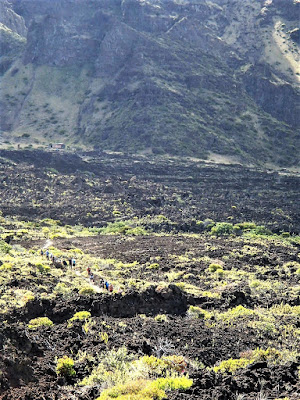
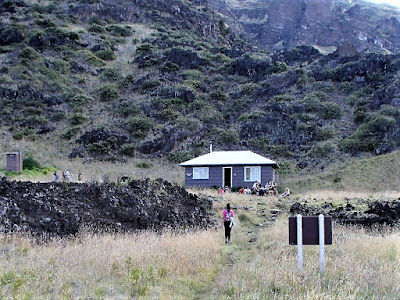









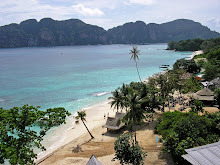

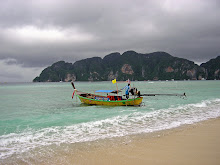







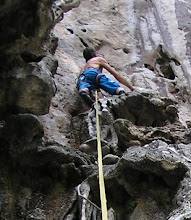


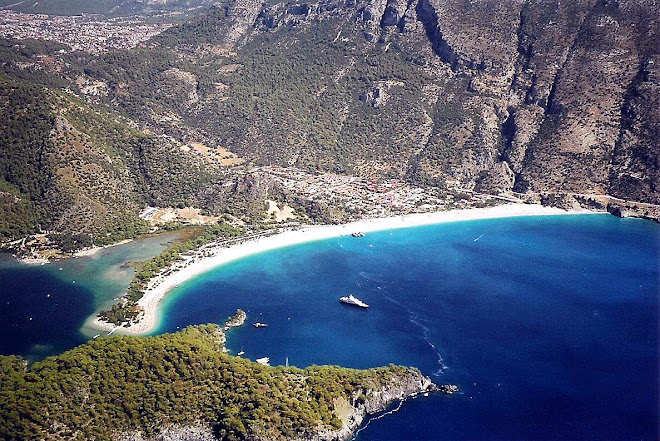
No comments:
Post a Comment